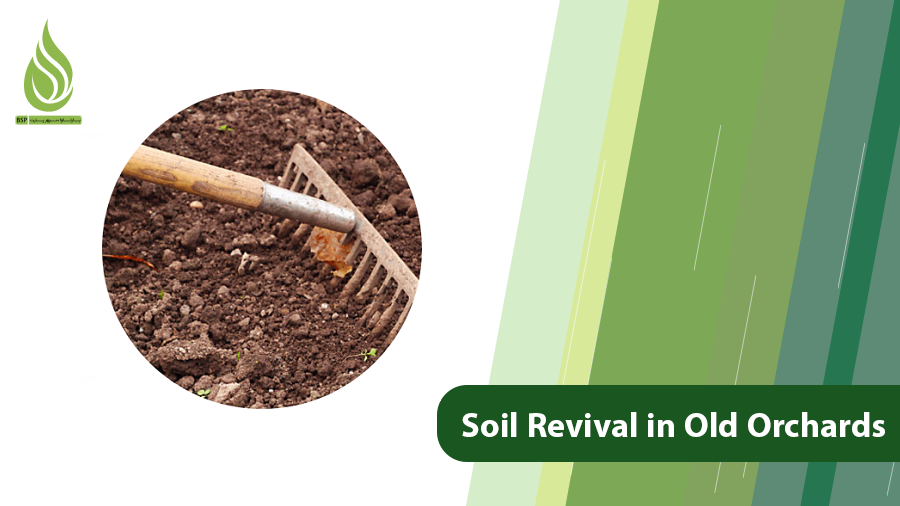
Soil Revival in Old Orchards to Boost the Performance
Many orchard owners, after years of tending to their gardens, notice that their trees aren’t producing as abundantly as they once did. Fruits are smaller, leaves look lackluster, and the soil seems lifeless. If you have an old orchard with declining yields or weakening trees, the key solution lies in soil revival. In this guide, we’ll explore proven methods for rejuvenating soil in aging orchards and explain how these techniques can dramatically improve tree performance. These strategies can help restore vitality to your orchard.
Why Does Performance Decline in Aging Trees?
Old orchards house mature, valuable trees that often represent cultural and natural heritage in regions around the world, including the Middle East. These trees, such as pistachio, date palms, or citrus varieties common in Iran and Turkey, have stood the test of time but face inevitable decline due to environmental and management factors. Over years, soil erosion, nutrient depletion, and contamination take a toll, leading to reduced yields.
Several key reasons contribute to this drop in performance:
- Soil Erosion and Depletion: Over time, soil loses organic matter and essential nutrients. Heavy rains, strong winds, and lack of ground cover exacerbate this, especially in semi-arid Middle Eastern climates where wind erosion is rampant. In the Near East and North Africa (MENA) region, erosion removes fine particles, nutrients, and organic matter from topsoil, making it harder for roots to access what they need. This limits the soil’s ability to nourish roots, resulting in stunted growth and lower fruit production. Globally, studies show that soil fertility declines with accelerated erosion, influenced by farming methods and site conditions. In the Middle East, where about 45% of agricultural land faces salinity, nutrient depletion, and erosion, this issue is particularly acute.
- Salt Accumulation and Soil Compaction: Continuous irrigation with somewhat saline water, common in Middle Eastern countries like Iran compact the soil, reducing water and air permeability. Roots then struggle in a suffocating environment. In MENA, human-induced erosion from overgrazing and poor irrigation further depletes soil, leading to desertification. Similar issues in older orchards, such as those in California or Spain, highlight how compaction hinders root expansion.
- Weak Root Systems: Aging trees develop inefficient, old roots that can’t absorb nutrients and moisture effectively. This is compounded in regions with nutrient-poor soils, like parts of the Arabian Peninsula, where natural fertility is low.
- Moisture Deficiency: Erosion or improper watering leaves soil dry, stressing trees and cutting fruit output. In the Middle East, where water scarcity is a major challenge, floodwaters can wash away nutrient-rich topsoil, worsening the problem. Recent FAO reports emphasize that soils in the region are deteriorating due to erosion, nutrient loss, and organic carbon depletion.
- Pests and Contamination: Without regular monitoring, pests and diseases ravage older trees, damaging roots and leaves. In Middle Eastern orchards, issues like fungal infections in olive groves or nematode infestations in date palms are common, further reducing vitality.
Reviving soil not only boosts tree yields but also enhances the overall ecosystem health of the orchard. In the MENA region, where land degradation affects food security, such practices are vital for sustainable agriculture. Globally, old orchards face similar challenges, from nutrient imbalances in European vineyards to water stress in Australian fruit farms.
To illustrate, consider ancient Bedouin orchards in the arid Negev region of Israel, where terrace systems conserve soil and water, maintaining tree vitality for centuries. These historical examples show that proactive soil management can prevent decline, a lesson applicable to modern orchards.
What Is Soil Revival, and Why Is It Essential?
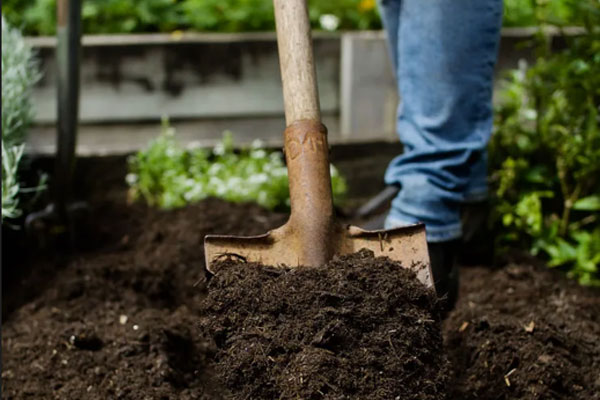
Soil revival refers to a set of practices aimed at restoring the physical, chemical, and biological health of the soil. When soil regains its vitality, aging trees breathe new life, regaining high productivity. This process is crucial for old orchards, where years of cultivation have stripped away essential elements.
Why prioritize soil revival?
- Enhancing Soil Quality: Old soils are often nutrient-poor. Revival improves soil texture, fertility, and structure, creating ideal conditions for tree growth. In alkaline Middle Eastern soils, amendments like sulfur-based fertilizers can balance pH, unlocking nutrients.
- Boosting Crop Yields: Healthier soil leads to stronger trees, higher fruit quality, and increased production. Fruits become larger, juicier, and more flavorful. Studies on fruit trees show that nitrogen-rich fertilizers like ammonium sulfate promote rapid growth and greening.
- Promoting Ecosystem Sustainability: Revival supports biodiversity, aiding beneficial microbes and organisms. In regenerative agriculture rising in MENA, practices like cover cropping improve water efficiency and soil health. Initiatives like India’s revival of ancient fruit trees through grafting and soil enrichment preserve heritage while enhancing sustainability.
In the Middle East, where desertification threatens vast areas, innovative technologies like liquid nano-clay (LNC) are transforming sandy soils into fertile ground in hours, offering hope for orchard revival. A 2024 study from Khalifa University highlights how LNC prevents desertification through regenerative methods. Globally, FAO emphasizes restoring land in regions like the Near East to combat degradation threats.
How to Tell If Your Soil Needs Revival
Identifying the need for soil revival early can save your orchard. Look for these signs:
- Aging Soil and Trees with Poor Performance: If your orchard is old and yields are suboptimal, test the soil.
- Stunted Growth: Weak or halted tree development signals nutrient shortages.
- Reduced Fruit Quality: Smaller or fewer fruits indicate soil issues.
- Excessive Leaf and Fruit Drop: This points to stress from poor soil.
- Branch Dieback: Gradual drying of branches suggests root problems.
- Crusty Soil Surface or Poor Water Infiltration: Compacted or eroded soil absorbs water poorly.
In Middle Eastern contexts, additional signs include salt crusts on soil surfaces, common in irrigated areas like Iran’s pistachio orchards. Similar indicators appear in aging apple orchards in the U.S., where nutrient depletion leads to visible decline.
Step-by-Step Guide to Reviving Soil in Old Orchards
Reviving soil is a systematic process. Start with analysis and proceed methodically, adapting to your region’s conditions.
1. Soil Analysis and Identifying Needs
The foundation of revival is thorough soil testing. Sample the soil and analyze pH, nutrients, salinity, moisture, and texture. This data guides targeted amendments. In MENA, where salinity affects 68% of irrigated land, testing is crucial. Use labs or kits to get accurate results. A 2025 study on long-term apple orchards emphasizes how management practices impact soil quality.
Revival means bringing life back to the earth; when soil thrives, trees do too.
2. Soil Tillage
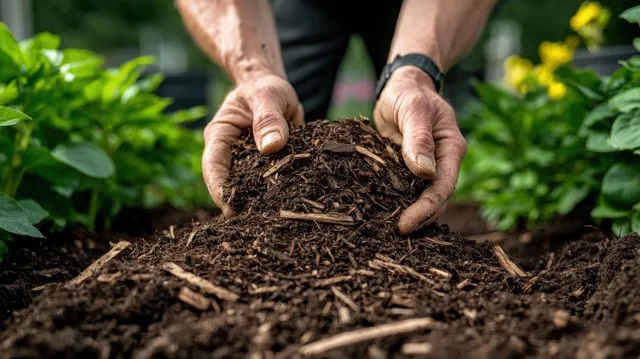
Tillage involves physical operations to improve soil structure for root growth. This includes plowing, breaking clods, aerating, leveling, and mixing residues or fertilizers. Deep plowing with organic additions lightens texture and eases root breathing. The goal: enhance water/air permeability, structure, and microbial activity, boosting fertility and reducing compaction.
Avoid heavy machinery to prevent further compaction. In Middle East orchards, light tillage helps combat wind erosion. Add sand or clay to adjust texture for optimal balance; not too hard or soft. A recent Ethiopian study shows how land management reduces runoff and nutrient loss.
3. Incorporating Organic Fertilizers
During tillage, add organic matter to enhance structure and water retention. Compost, rich in nutrients, boosts microbial activity and moisture-holding capacity. In regenerative practices, this is key for soil health. Biochar and organic amendments improve quality in orchards, per a 2025 Korean study. In India, ancient grains like millets revive dead soil quickly.
For Middle Eastern orchards, compost from local wastes can counteract nutrient depletion.
4. Strategic Chemical Fertilization
When organics fall short, chemical fertilizers address specific deficiencies. Review soil tests to identify needs. Ammonium sulfate stands out for reviving weak soils, providing absorbable nitrogen and lowering pH to enhance nutrient uptake. For fruit trees, it optimizes growth and yield with high nitrogen for chlorophyll and sulfur to prevent deficiencies. It regulates pH in alkaline soils, common in the Middle East, improving nutrient availability without overuse risks.
Apply in split doses during cool periods to avoid harm. In Missouri crops, it boosts soil health and crop growth. For Middle Eastern fruit trees like dates or olives, Iranian ammonium sulfate is ideal, reducing pH for better absorption. It’s used for rapid greening and acidifying soils.
Avoid excess to prevent environmental damage; tailor to soil needs.
5. Chemical Soil Amendment
Imbalanced soil pH blocks nutrient absorption. For high salinity or alkalinity; prevalent in MENA; use agricultural sulfur or ammonium sulfate to neutralize. Ammonium sulfate, with its sulfur content, is particularly effective for alkaline soils, promoting plant growth. For acidic soils, add lime to raise pH.
In Australian revegetation initiatives, such amendments restore health.
6. Managing Irrigation and Soil Moisture
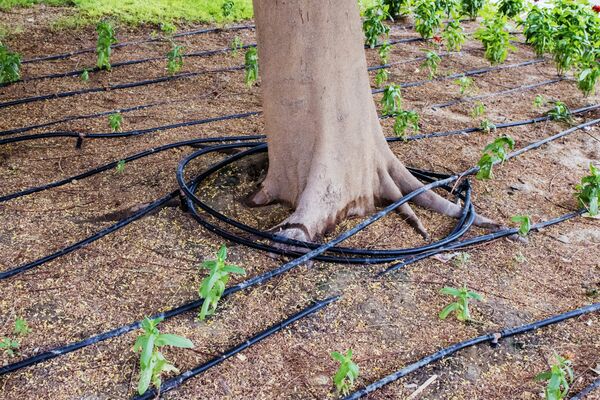
Proper irrigation preserves moisture and prevents drought. Drip systems minimize waste and improve even distribution, ideal for water-scarce Middle East. Time watering based on tree needs for optimal root conditions. In ancient systems like Bedouin terraces, this conserves resources effectively.
Globally, efficient irrigation in old orchards, like U.S. apples, sustains yields.
7. Planting Cover Crops
Cover crops have become standard in modern orchards, improving structure, adding organics, preventing erosion, retaining moisture, and boosting biodiversity. They suppress weeds and enhance microbes.
Legumes like clover or vetch fix nitrogen, enriching soil. In the U.S., Spain, and Turkey, this is widespread; in Iran, it’s gaining traction for pistachios, apples, and citrus. A 2024 study shows leguminous covers improve soil quality in orchards.
In MENA regenerative ag, cover crops are among top practices for water efficiency.
By combining scientific testing, organics, fertilizers like ammonium sulfate, and better aeration, you can restore aging trees to peak productivity.
The Impact of Soil Revival on Tree Rejuvenation
Implementing revival in old orchards yields visible results after a few seasons. Improved structure activates roots, fostering new growth for better nutrient and water uptake.
Leaves become vibrant, photosynthesis ramps up, and fruits grow larger and tastier. Revival extends orchard life naturally. A 2025 review on rejuvenating senile orchards highlights techniques for renewed productivity. In organic systems, soil properties improve significantly.
In the Middle East, rehabilitation via orchards restores degraded land. A 2025 study on longan orchards shows how management affects bacterial diversity and soil health.
Ongoing care is key: monitor soil, irrigate regularly, and nourish trees.
Essential Care After Soil Revival
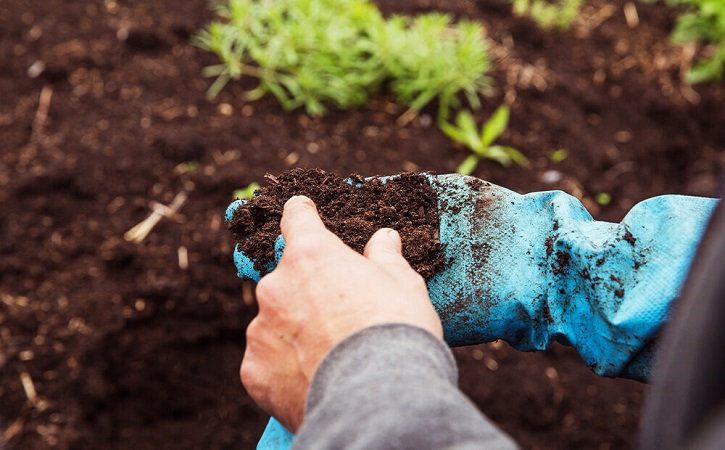
Post-revival maintenance ensures lasting benefits:
- Soil Monitoring: Regularly check texture and moisture.
- Consistent Irrigation: Water based on needs to avoid drought.
- Ongoing Nutrition: Fertilize per annual tests, using ammonium sulfate for sustained nitrogen and sulfur.
- Pest and Disease Control: Use biological methods to minimize damage.
Annual soil tests guide adjustments. In MENA, this sustains resilience against climate challenges.
In conclusion, reviving soil in old orchards is a transformative process that boosts yields, enhances quality, and promotes sustainability. By integrating global and Middle Eastern insights, and leveraging fertilizers like ammonium sulfate, you can rejuvenate your trees for generations. With careful implementation, your orchard can thrive anew.